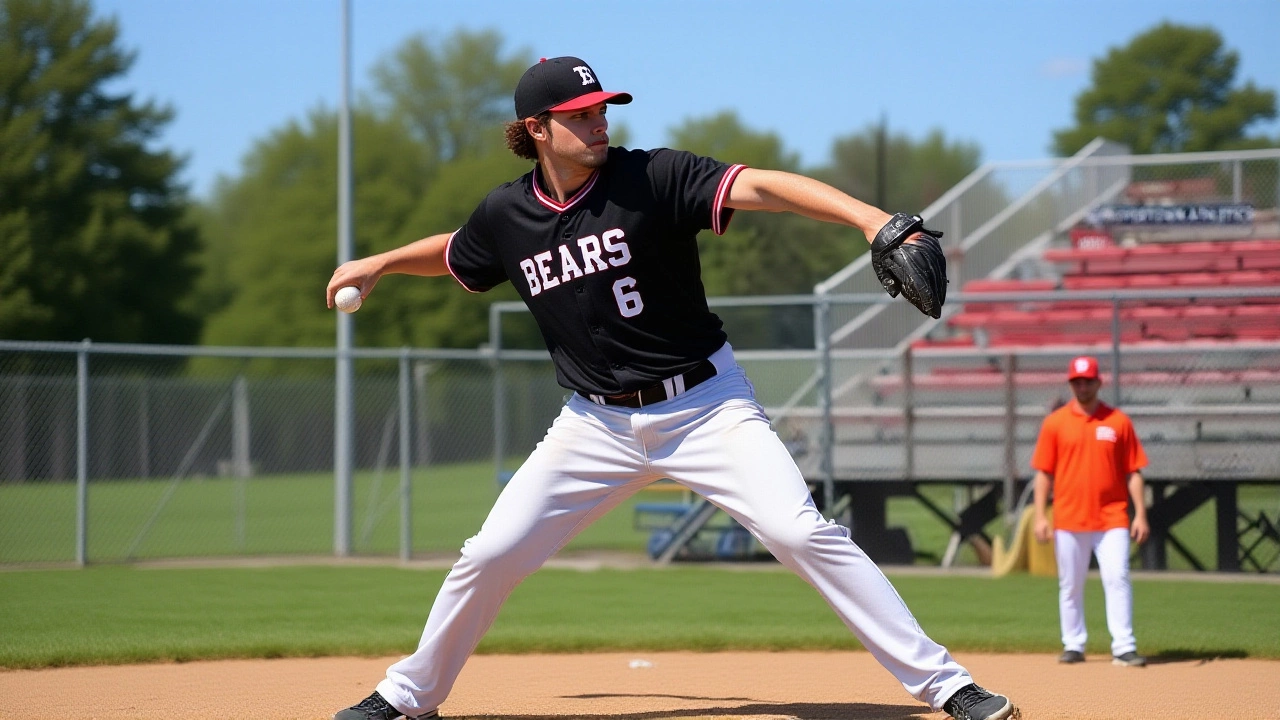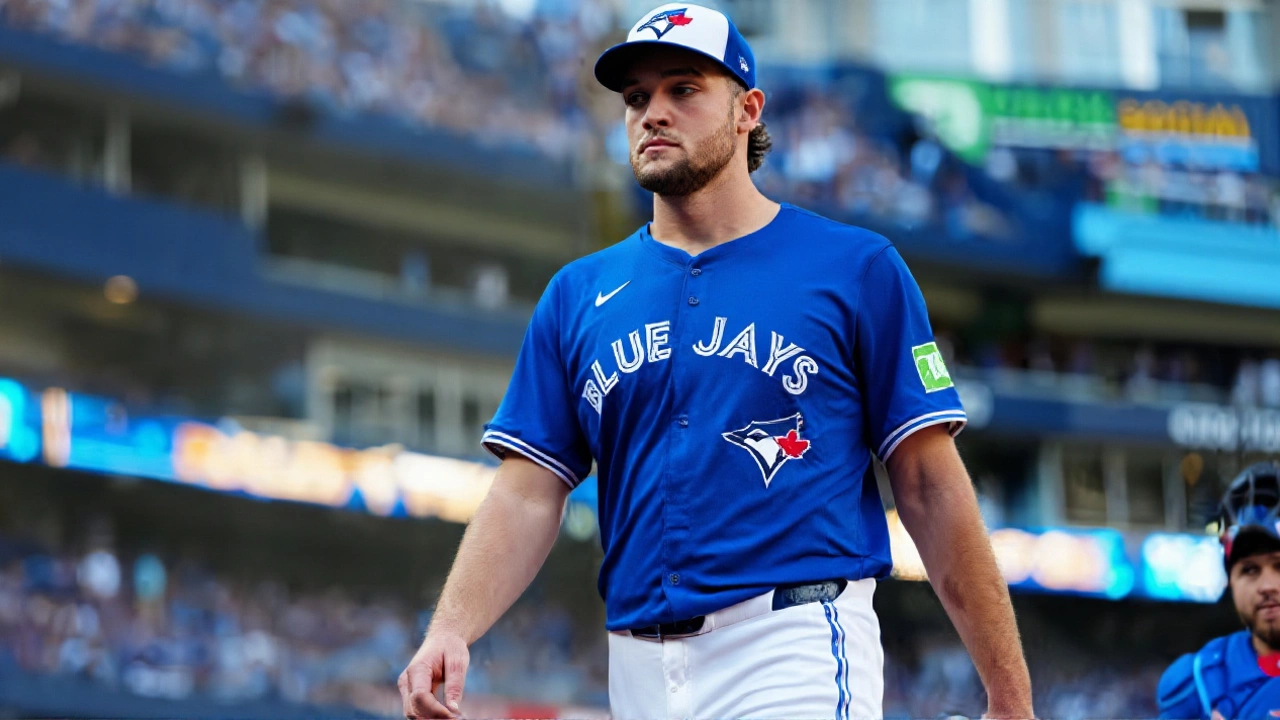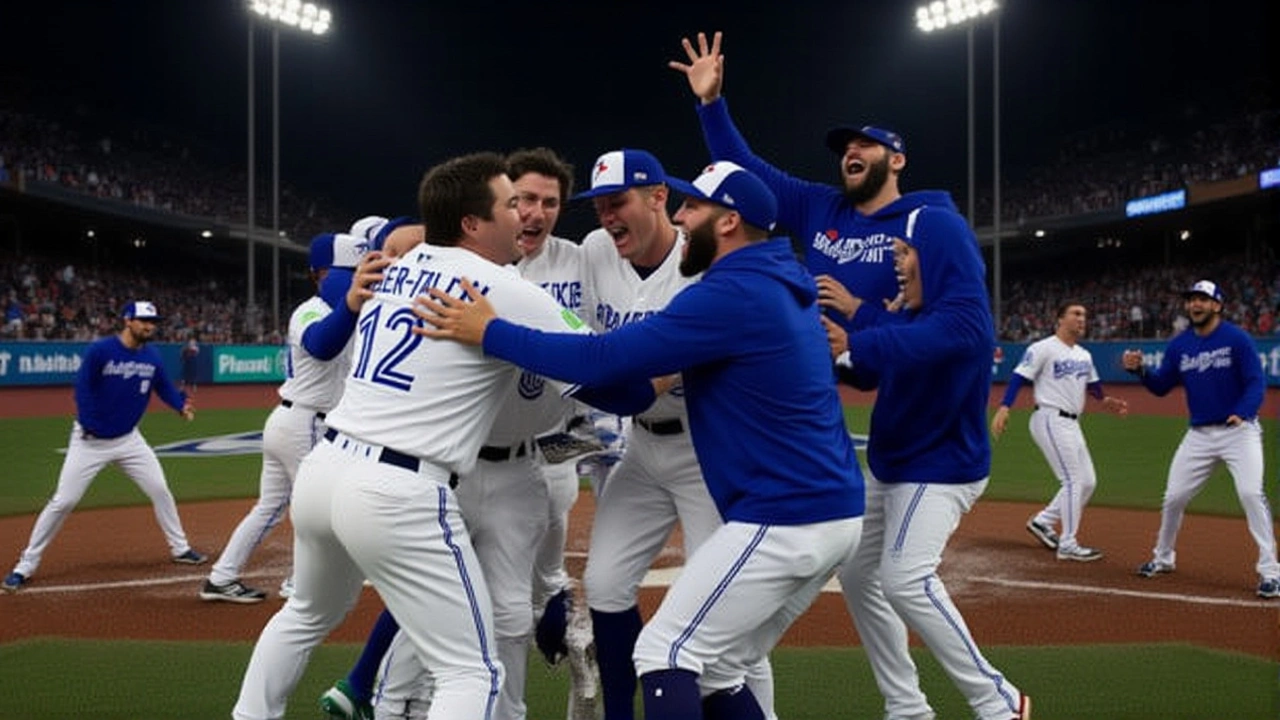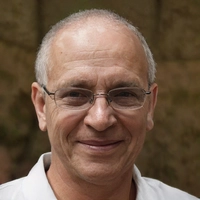When Trey Yesavage, right‑handed pitcher for the Toronto Blue Jays took the mound at Rogers Centre on Friday, October 24, 2025, it wasn’t just another debut – it was a statement that a 22‑year‑old could shoulder a World Series opening start. The game, broadcast nationwide at 8:00 PM Eastern, pitted Yesavage against the defending champions, the Los Angeles Dodgers, who sent left‑hander Blake Snell to the hill. The significance? Yesavage became the second‑youngest Game 1 starter in World Series history, and the Blue Jays were finally back in the Fall Classic after a 32‑year drought.
Background and Road to the World Series
Yesavage’s ascent has been meteoric. Drafted 20th overall in 2024 out of East Carolina University, he bounced through the minor‑league ladder faster than most prospects. After a stint with the Dunedin Blue Jays (Class A) in early 2025, he moved to the Vancouver Canadians (High‑A) on May 20, then to the New Hampshire Fisher Cats (Double‑A) on June 12, and finally the Buffalo Bisons (Triple‑A) on August 12 before his September 15 major‑league debut.
In the regular season he logged three starts, posting a 1‑0 record with a 3.21 ERA, 16 strikeouts and only seven walks over 14 innings. His signature split‑finger fastball (a splitter) was already garnering buzz, but it was the postseason that turned heads.
During the ALDS against the New York Yankees, Yesavage threw 5 1/3 scoreless, hitless innings in Game 2, fanning 11. He stumbled a bit in the ALCS Game 2 loss to Seattle (five runs in four innings) but rebounded to win Game 6, allowing just two runs in 5 2/3 innings and delivering a clutch 93‑pitch effort. Those performances earned him the Game 1 nod, announced by Blue Jays manager John Schneider at a press conference on October 23.
Game 1 Performance and Record‑Breaking Night
On the mound, Yesavage kept the Dodgers to two runs over four innings, surrendering five hits and striking out five—including a first‑inning strikeout of future MVP Shohei Ohtani. He threw 80 pitches, just 10 of which were his trademark splitters, and his fastball sat a hair slower at about 96.5 mph, a full mile per hour below his typical 97.5 mph. The youngster walked three, but the Blue Jays’ offense exploded in the sixth, scoring nine runs to turn an 11‑4 victory into a statement win.
The strikeout total pushed Yesavage’s postseason total to 27, eclipsing David Price’s previous Blue Jays record of 26 strikes in a single playoff run. At 22 years and 88 days, he slipped into the record books as the second‑youngest Game 1 starter, behind only Ralph Branca (21 years 267 days) back in 1947.
Post‑game, Yesavage reflected, “It was an insane experience I’ll remember for the rest of my life. I wish I could’ve done a little better, but that’s why it’s a team sport.” Earlier in the night, after fanning Ohtani, he’d joked, “My goal is to strike out everybody I face. Starting off hot definitely boosted my confidence.”

Reactions from Toronto, Boyertown and the Dodgers
In Toronto, the city’s streets buzzed with “Trey Day” celebrations. Mayor Olivia Chow declared a civic holiday, and fans lined the streets outside Rogers Centre wearing blue and white. Across the border, Boyertown, Pennsylvania, the pitcher’s hometown, turned its high school into a sea of Toronto caps. Long‑time baseball coach Todd Moyer, who mentored Yesavage for 39 years, said, “It’s amazing. I’d have started him in Game 2, where he’s comfortable, but he proved he can handle the spotlight.”
Dodgers manager Dave Roberts stayed measured, noting, “Blake gave us a solid start, but we’ll regroup. Toronto showed why they’re here.” Snell, speaking briefly after the loss, praised the rookie: “Kid’s got guts. He kept us honest.”
What’s Next for the Series
Game 2 returns to Rogers Centre on Saturday, October 25, with Schneider weighing his veteran trio—Kevin Gausman, Max Scherzer and Shane Bieber. Gausman, who threw a brief relief stint in the ALCS, said, “It made sense to hold me for a day,” hinting he might be ready for a start. If the series shifts to Los Angeles, Games 3‑5 will be at Dodger Stadium between October 27‑29.
Analysts project the series to be a pitch‑heavy duel. The Dodgers own a seasoned rotation with Snell, right‑hander Yoshinobu Yamamoto slated for Game 2, while Toronto’s depth will be tested if they opt for a veteran arm after Yesavage’s four‑inning outing.

Historical Context: Young Starters in World Series History
Before Yesavage, only a handful of pitchers under 23 have started a World Series opener. In 1947, Ralph Branca’s 21‑year‑old debut set a precedent that stood unchallenged for decades. More recent examples include 22‑year‑old Jacob deGrom, who never got a Game 1 start but made his postseason debut at 23 in 2015. Yesavage’s placement underscores a growing trend: teams are trusting youthful arms in high‑pressure situations, a shift from the veteran‑heavy rotations of the 1990s.
For the Blue Jays, the win ends a 32‑year World Series drought dating back to their 1993 championship. It also marks the first time a rookie has started a Game 1 for Toronto since the franchise’s inception in 1977.
Frequently Asked Questions
How does Trey Yesavage’s performance affect the Blue Jays’ chances in the series?
Yesavage’s strong debut gives Toronto a psychological edge and validates Schneider’s willingness to lean on youth. While the series is still a marathon, his ability to limit the Dodgers to two runs and generate five strikeouts shows the staff can rely on him in future high‑leverage spots, potentially allowing veteran arms to rest or pitch on shorter schedules.
What made Yesavage’s splitter effective against a hitter like Shohei Ohtani?
The splitter drops sharply just before the plate, disrupting Ohtani’s timing. Yesavage mixed it with a fastball just a half‑second slower than his norm, fooling Ohtani into swinging over the top. The pitch’s depth and late movement resulted in a called strike followed by a swinging strike, a rare feat against a player who rarely strikes out.
Why did the Dodgers choose Blake Snell for Game 1 instead of a left‑handed specialist?
Snell brings veteran poise and a proven postseason track record. The Dodgers wanted a pitcher who could eat innings and set the tone, especially after a solid regular season. His left‑handed delivery also matches well against Toronto’s line‑up, which leans right‑handed, allowing strategic matchups later in the game.
What are the historical odds of a rookie starting a World Series opening game?
Only three rookies have opened a World Series since 1903, making it an event with roughly a 0.5% likelihood. Yesavage joins Ralph Branca (1947) and a handful of wartime stand‑ins, highlighting how unusual his appointment truly is.
How will the series schedule affect travel and rest for both teams?
The first two games stay in Toronto, giving the Blue Jays a home‑field advantage and a day of rest before the cross‑country trip. Once the series moves to Los Angeles, both squads will face a three‑day travel window (Friday to Monday). Pitchers who threw deep innings in Game 1, like Yesavage, may see a four‑day rest before a potential Game 5 start, while the Dodgers’ rotation will likely follow a more traditional three‑day schedule.

